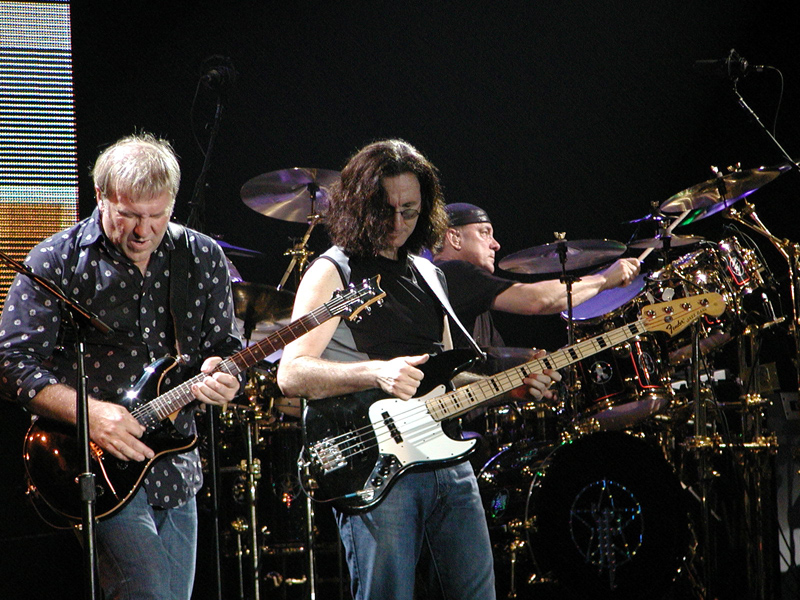Colby Cosh, clearly a fellow long-time Rush fan, heaves a sigh and writes the musical epitaph:
All of this — even Neil Peart’s remorseless flintiness — reflects the distinctive, endearing characteristics of Rush: the band has now ceased to exist for some of the same reasons it attracted adoring generations of listeners. As a commercial proposition, Rush remains a potential superpower. Other groups of similar magnitude have always been able to find ways to push on when important members, or even every member that anyone might recognize, came to the end of the road. (In a rock group there is usually at least one person who could really use the cash from a tour.)
Could Geddy Lee and Alex Lifeson find some young drummer with healthy wrists and ankles, take “Rush” to the casino circuit, and sell mountains of $75 tickets? They probably could, and they would probably put on a wonderful show. But it is unthinkable (he wrote, knocking on the wood of his desk) for them to do such a thing under the Rush name.
They could probably even devise a low-stress acoustic-heavy setlist, with slowed-down versions of the hits, that they could take to small venues with Peart in tow. Tempting as such schemes must be — Lee was publicly in denial about Peart’s second retirement for ages, and Lifeson says he would go on if it were entirely up to him — they do not suit the nature of Rush.
The group is a three-piece in which every piece counts more or less equally. And part of what their fans pay to see is physical effort of the highest intricacy. I hope it will not offend my fellow Rush fans if I compare it to juggling or acrobatics, or at least suggest that it has such an aspect. Rush songs are full of unpredictable, shifting time signatures and difficult cues. The band’s numerical paucity leaves nowhere to hide dropped chords or melodic clangers. Unlike most three- and four-piece groups, Rush has almost always refused to ever bring a hired sideman onto the live stage, even though this requires Lee to operate sequencers with foot pedals while playing what are often ludicrously difficult bass lines — AND singing like, well, like Geddy Lee.
This, I say as someone who loves Geddy like a family member, is truculence bordering on absurdity. If Rush could approach fans individually and talk it out with them, they could probably persuade them that it made sense to bring a keyboardist, or even a rhythm guitarist, along on the road. (Some groups even sneak in a second percussionist!) It may even be a bit sad that we were denied a more collegial Rush, one that participated in the life of its musical generation, strayed occasionally from its triune purity, and did fun crossovers with other groups (such as 1980’s “Battle Scar”, recorded with fellow Torontonians Max Webster for the Universal Juveniles LP).




